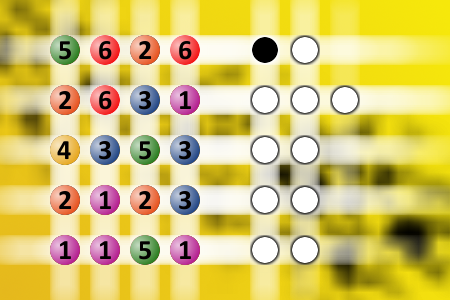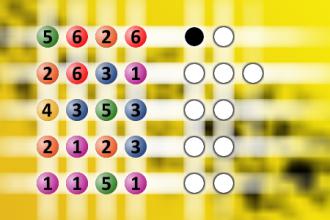Which is a winning combination of digits?
The computer chose a secret code (sequence of 4 digits from 1 to 6). Your goal is to find that code. Black circles indicate the number of hits on the right spot. White circles indicate the number of hits on the wrong spot.
More Halloween 2018 jokes
What plants like Halloween the most?
Bam-BOO!
What do birds say on Halloween?
Twick or tweet
What do you get when you cross a werewolf and a vampire?
A fur coat that fangs around your neck.
What would you find on a haunted beach?
A sand-witch!
Why didn’t the skeleton like the Halloween candy?
He didn’t have the stomach for it!
What’s worse than being a five-ton witch on Halloween?
Being her broom!
Why do ghosts like to ride in elevators?
It raises their spirits.
What do you get when you divide the circumference of a jack-o-lantern by its diameter?
Pumpkin Pi.
What would you get if you crossed a vampire and a teacher?
Lots of blood tests!
Why are vampires so easy to fool?
Because they’re suckers.
What did the ghost say when the skeleton lied to him?
I can see right through you.

